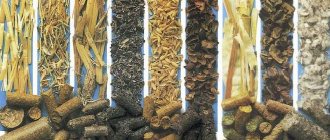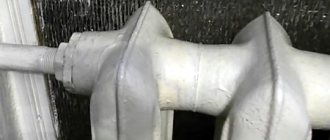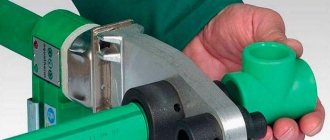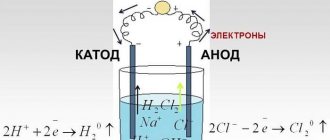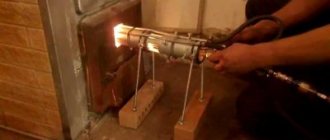Standard construction is a thing of the past. Today, every owner strives to make his home functional and individual. At the same time, attention is paid not only to design. Sound insulation, heat retention and proper ventilation are of no small importance. You can do a lot of work using polystyrene foam. However, manufacturers package the material in large sheets. That is why it is important to choose a reliable and comfortable tool for cutting them.
Required tools and materials
Polystyrene foam is a lightweight material that can be cut using a variety of tools. In some cases, the accuracy and cleanliness of the cut is of no small importance. These properties can be achieved using the following tools:
- an ordinary sharp knife;
- small stove or hacksaw;
- strong string;
- knife with thermal effect;
- thermal cutter;
- cutter with laser beam.
Each builder has his own preferences regarding the choice of one of the tools. All tools allow you to process foam plastic efficiently and form an even line. Foam plastic has low resistance to mechanical stress - this should not be forgotten when choosing a tool.
Where can I use it?
A universal material that can be used to insulate any surface:
- Roofs and walls.
- Floor and plinth.
- Industrial buildings and residential buildings.
This is one of the simplest methods of insulation, which is why many people use foam plastic. The house will become comfortable and warm, and the insulation itself is very reliable. The installation work itself and the material are inexpensive, so if you wish, you can hire a team of workers for these purposes.
To insulate walls, foam sheets are more often used, and crumbs or balls are used for the roof. The floor and base are often insulated with extruded polystyrene foam.
Cutting with a stationery knife
Even at home, with a real master, cutting polystyrene foam will not cause problems. To do this, it is enough to have a stationery knife with you. It is important that its blade is sharp enough. This ensures that the likelihood of waste is minimized.
It is most convenient to use a knife to cut sheets up to 5 mm thick.
Otherwise, it is advisable to use a machine or other automatic device.
If you don’t have a sharp knife, a regular saw or hacksaw can easily replace it. You should choose a tool with a short tooth. Thanks to this, the final surface will not be rough.
Today, in any hardware store you can find a special blade for cutting foam plastic. When exposed to it, only fine dust will be formed.
The choice of tool directly depends on the goal and task. It is recommended to carry out the process in the bathroom or on the balcony. In this case, only a small amount of dust will be generated in the main rooms.
We use automated systems
The delights of architectural design also require insulation. In order to preserve their expressiveness, it becomes necessary to manufacture complex elements. How to cut out such details? A more affordable option is to process the insulation by milling. But milling of foam plastic is not carried out for the reason that the cutter, when rotating, tears out quite large pieces of material.
Dense polystyrene foam has higher mechanical strength and is easily milled. Anything can be made from it: a letter, a number, a graphic element of any complexity. Even a hedgehog. It is recommended to cut penoplex at high angular speeds with an average linear feed. To install the manufactured fragments on the façade, ceresite is used.
Laser cutting of foam is the most advanced technology, combining a hot cutting tool and the precision of an automated system. Laser cutting of foam plastic allows us to produce parts of any complexity with the highest precision with a minimum level of waste. Laser cutting foam produces a completely smooth cutting surface using a hot beam of directed light moving at high speed. There are no restrictions on the thickness of the material and the complexity of the element.
The choice of cutting equipment used for foam boards and extruded polystyrene foam must be conscious. Meet technological requirements for finished products and be economically feasible.
Nichrome wire cutting
To use this tool, you will need to additionally assemble the device. It will include not only a nichrome thread, but also a 12 or 24 volt transformer. You also need to take a piece of small pipe and a table in advance. The string tension will be organized by a spring. Nichrome is a material that is part of any hair dryer. The device must function in such a way that the thread heats up and can melt the foam. Thanks to this, it is possible to obtain various complex shapes from the material.
In order for the device to begin functioning, a wooden block is fixed on the table. You must first make a hole in it and install a piece of pipe. Next, you will need to secure the nichrome wire to it using a spring. It will heat up only after connecting to the transformer. A piece of foam plastic should be brought to it and given the required size.
Classification of machines
The design features of the units do not differ from each other. In each of them, cutting occurs due to a hot wire fixed in a certain position. Some of the modifications have up to six adjustable strings, this allows for more massive work. Machines for cutting foam plastic can be equipped with a rotary table with a permanently fixed cutting element.
Foam cutting machine options
The devices are divided into several categories:
- equipment with software control, allowing you to cut out figures of increased complexity;
- portable cutting elements;
- transverse or horizontal types of cutting.
The most complex machines in design allow you to work on several planes of a product at once. The performance of foam cutting machines is designed for industrial purposes; some models can process over 10 meters in one go.
Cutting foam with a string
When using a knife, the material may crumble significantly. In this case, it is replaced by a regular string. To obtain the fastest possible cutting, it must be preheated to the desired temperature. At home, you can assemble the device yourself. To lower the temperature, you should additionally include a step-down transformer in the network. The device has the same principle of operation as with nichrome thread. It is important to select a pipe so that its thickness does not exceed 20 mm. Thanks to the device, it is possible to quickly cut foam up to two centimeters. The quality of the string is of no small importance - it should be thin and sharp.
Temperature characteristics:
| Polystyrene | Operating temperature limits, C | Vicat softening point | Heat resistance according to Martens | Melting point C | |
| upper | lower | ||||
| PS | 65-70 | -40 | 82-105 | 76-82 | 160-175 |
| ABS | 75-85 | -60 | 99-100 | 90-104 | 165-180 |
Dielectric constant of polystyrenes:
| Polystyrene | έ at v, Hz | ||
| 50 | 103 | 106 | |
| PS | 2,65 | 2,6 | 2,6 |
The flammability index (K) is a dimensionless quantity that expresses the ratio of the amount of heat released during combustion to the amount of heat expended on igniting a sample of material. Material with index K>0.5 is flammable. For polystyrene, the K-1.4 indicator is flammable
DIY foam cutting device
Polystyrene foam can be cut not only with nichrome thread, but also with metal plates. The basis should be a regular soldering iron with a power of 60 W. It will need to be reconstructed - instead of a sting, place a knife plate. Hot-melt synthetic is also used as the main material.
The wooden leg must be additionally equipped with support legs. First, make a slot in the board and place a knife in it. Additionally, the device should be equipped with a stand with brackets. Of no small importance is the safety screen, which will further protect the person from burns.
During the cutting process, the thermal knife must be positioned at an angle to the surface. The blade is also sharpened on both sides at once. You should first hone your skills on unnecessary scraps of material. In this case, a smooth and beautiful surface will be guaranteed.
What are foam boards
Expanded polystyrene, this is the second name for foam, consists of air bubbles enclosed in a plastic shell. They are glued together and form a mass with low density. Air in each slab of material is about 95%. That is why the material retains sound and heat well. But at the same time it crumbles, breaks and bends when mechanically damaged, cannot withstand high temperatures, and is easily flammable.
Despite this, expanded polystyrene is widely used as an insulator. In addition to good insulating properties, it is easy to install. Light weight with significant dimensions facilitates installation and does not load the building structure. The slabs are not afraid of high humidity; insects and microorganisms do not settle in them. However, almost all technical liquids, including acids, alkalis, solvents and some types of adhesives destroy the structure of expanded polystyrene.
Instagram promstroipenoplasty
Instagram polistirolbetontsentr
How to cut foam. Step-by-step instruction
- The first step is to find a sufficiently thin and sharp object that will be used to form the cut.
- If you don't have a special tool, you can use a credit card, a table knife, or any object with thin edges.
- The foam can be easily broken along the cut line. It is most convenient to do this at the edge of the table. You can apply only light pressure.
- If there are any convex pieces left, they can be cleaned off with a knife.
How to make a device for cutting a corner groove for joining penoplex
Polystyrene foam, polystyrene foam and polystyrene foam with a milled quarter allow joining of sheets without cold bridges, resulting in a single rigid plane. However, when we trim, we remove the quarters, so the cut pieces are no longer suitable for use. Having made a cutter of the proposed design, you can cut a quarter on the scraps, thus using them without any residue.
Advice from professionals
To quickly and efficiently cut foam, it is recommended to follow the following professional tips:
- It's not very convenient to cut with a regular knife. It is best to use a soldering iron instead. You can quickly and efficiently cut polystyrene foam if the round side can be easily flattened with a hammer. Additionally, you will need to put a metal cap on the electrical device. The knife blade must be well secured. Only after this should the soldering iron be plugged into the network. You can only work with the tool in a well-ventilated area. It is best to open the windows additionally. When heated, a soldering iron releases gas, which has a toxic effect on the respiratory system.
- It is most convenient to cut the foam with nichrome thread. Thanks to it, the process will go quickly, and the edges will be smooth.
- Nichrome material is found in hair styling devices, hair dryers, irons, and boilers. If it is not possible to get such a thread, then you can use steel wire. It should be stretched across the table. One side is attached rigidly, and the other only with the help of a spring. A transformer is connected to both of them. It must first be connected to the electrical network.
- The foam sheet must be placed on top of the wire. The current charge directly depends on the thickness of the working material. It is necessary to ensure that the wire turns red. You should not allow it to become heated, because in this case the cut may turn out to be too wide.
- It is most convenient to carry out all manipulations if the table is at an angle of 20-60 degrees to the floor. Thanks to this, the foam itself will be supplied under its own weight. However, for this to happen there must be a sufficient level of slip.
- Nichrome wire will become larger during use. That is why it is important to secure it to one side with a spring. Thanks to it, length regulation will occur.
- To cut foam plastic, you can use a grinder or jigsaw. It is also recommended to use a file with a wavy blade.
- If you need to create figures from foam plastic, then dough molds are quite suitable for cutting them out. However, in this case, you can only take foam whose thickness does not exceed 1.27 cm.
- To quickly smooth out the ridges, simply rub the foam against each other.
- When working with polystyrene foam, it is recommended to perform all manipulations on a cutting board. In this case, the likelihood of damage to the table is minimized.
Today, foam figures are very popular in interior design. To create them, it is advisable to use a special knife or automatic device. To obtain smooth edges, it is advisable to carry out all manipulations with a preheated object. You can make a knife yourself from an old soldering iron. This tool is very popular among interior designers.
Cutter manufacturing process
To manufacture the device, you will need to select plywood or other material whose thickness is equal to half the cross-section of the existing foam or polystyrene sheet. Then you need to cut 3 blanks 200 mm long and 100, 60 and 40 mm wide.
We make the widest one first, and cut it into a trapezoid. Only you need to cut not from the corner, but with an indentation of 10 mm to get a hexagon.
On the second part, 60 mm wide, you need to mark a longitudinal line. It is drawn indented from the edge by half the thickness of polystyrene foam and polystyrene foam. We place a large blank on it according to the mark, and mark the corners along the ribs to cut them down.
We also apply a larger one to the narrow workpiece and align it with the beginning of the oblique ribs. Then we mark them and cut off the corners. We sand the parts so that they are smooth.
Methods for cutting sheets
The thermal knife heats up to 600 °C in just 10 seconds. However, this tool is quite expensive, so it doesn’t always make sense to buy it.
The way out in many cases will be a device for cutting foam sheets, made independently. It is probably somewhat cumbersome, but if you have the necessary components, it is absolutely free and always available. And if you have to do large-scale work, for example, you have ahead of you the insulation of a huge house that you built for your large family, then the question of how to conveniently cut the foam, and even a lot and quickly, will not come up throughout the entire event, no matter how small it is it took a long time.
In order to assemble a cutter for foam plastic, you will need a tabletop, a pair of springs, M4 screws and 28 mm long stands, as well as a nichrome thread, which will act as a cutting tool. First, we make two holes in the base, press the posts into them, and cut a small groove at the base of the screw head, thanks to which the thread will be securely fixed in the given position.
When everything is assembled, we attach the string to the screws, but since it can sag during heating, it should be connected through springs, then the thread will always be in a tense position. The power source is connected to such a device using ordinary twists. This way you can make a homemade and very effective foam cutter, while spending a minimum of effort, time and money.
Glue selection
To attach tiles to the ceiling, several types of glue are used:
- Universal compositions. Elitance glue is suitable for working with wood, plaster, and concrete. It is convenient because it forms an elastic seam, however, the composition takes a long time to dry. Titan glue is more common; it has a viscous consistency and sets quickly. The composition of Master glue is similar, but the strong smell and longer drying time are the main disadvantages. The advantage over Titan is its affordable price. “Moment” is an expensive but high-quality glue. It grips quickly, but the consumption is higher than its analogues. The packaging is in the form of a syringe, so it requires a gun. Universal adhesives also include “Dragon”, “Power”, “Anserglob”.
- Liquid Nails. This type of glue is often used by professionals. Liquid nails are thick, so they are placed in a thick layer on uneven areas. For tiles, choose a white adhesive, without solvents, especially when working with thin materials. It is also used to decorate seams. The most famous brands are “Moment Montage” and “Tytan”. For application you will need a construction syringe.
- Polyvinyl acetate glue. PVA and Bustilat practically do not give off an unpleasant odor, but they take longer to set, and the consumption can be quite large, since the glue is applied both to the tile itself and to the ceiling.
- Finishing acrylic putty. This is a non-standard, but effective use of a product that has the desired viscosity. When glued to putty, the seams turn out white and no gaps are formed. The surface can be painted. To work you will need a spatula.
Precautionary measures
When cutting foam, protect your respiratory system and eyes to prevent dust from entering. When using thermal methods, carry out work exclusively in the open air or in well-ventilated areas: polystyrene foam emits vapors and particles that are harmful to the respiratory system.
So, choosing the right and sharpened tool, properly securing the material during work and observing some simple conditions will help you make an even and high-quality cut with a minimum amount of debris.
Area measurement
To calculate the required amount of material before gluing the ceiling tiles, you need to determine the area to be decorated. Remembering the school mathematics course, the ceiling area can be determined by multiplying the length by the width. If the room is of a non-standard shape, take a sheet of paper and diagram the ceiling on it. We divide it into rectangles and calculate their area, then calculate the area of the remaining pieces.
To calculate the amount of materials, you need to find out the area of one tile and divide the total area of the ceiling by this figure. If the number you get is, for example, 80, this does not mean that this is the exact number of tiles you need to purchase. Increase the number by about 10%.


